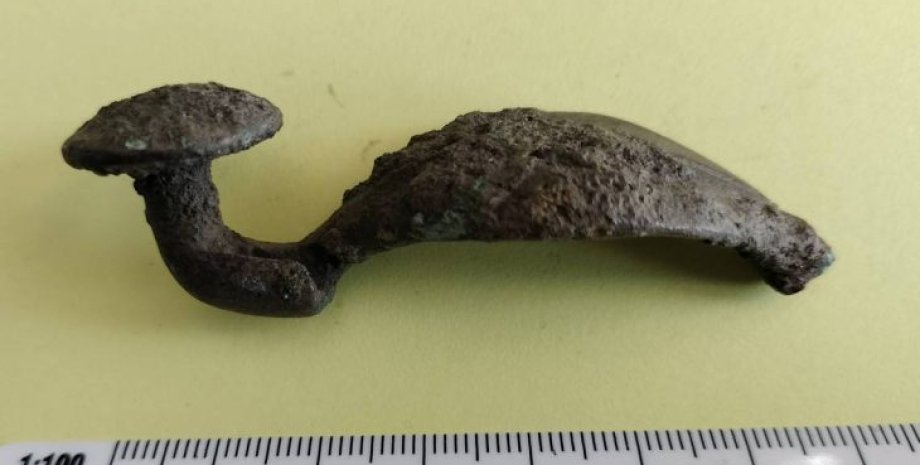
 By Victor Duda
By Victor Duda
Subscribe to not miss the latest and most intrusive news from the world of science! Fibula, 7 cm long with a maximum width of a bow 2. 4 cm, has two different ends: one resembles a mushroom and the other is a curved leaf. It is noteworthy that the upper surface of the bow is decorated with a complex ornament, and at the end there is a fastened needle with a convex tubercle above it. According to the researchers, it is only the fifth artifact of this type found in Poland.
Further analysis showed that Fibula is associated with the Luzhitsky culture, namely with the last phase of culture known as Hallstat D (approximately 550-400 BC). The Luzhitsky culture, which originated at the late bronze age, spread to most modern Poland, as well as parts of the Czech Republic, Slovakia, Eastern Germany and Western Ukraine in early Iron Age.
The name "Luzhitskaya" comes from the region of Luzhitsa in the east of Germany and the West of Poland, where the first burials of "Luzhitsky type" were documented by the German archaeologist Rudolf the vibrant in the nineteenth century. This culture was characterized by patriarchal clans that were engaged in agriculture, cattle breeding, hunting and fishing. Their bronze and iron skills were highly developed.
Veslav Kom, an archaeologist from the Zamoysky Branch of the Lublin Voivodesk Department of Monument Protection, identified the value of the find. He noted its importance not only for preservation, as it can indicate a new archeological monument, perhaps the cemetery of Luzhik culture, but also for research and cognitive purposes. According to Koman, the fibulae of this type are extremely rare and, as a rule, find only in the burial places related to the Luzhitsky culture.
Today, five such fibulae have been found in Poland, including three in the Luzhitsky cemetery in the Ketra (Opolsk Voivodeship) and one at the Krakow-Pleshchi burial ground (Malopolsky Voivodeship). In addition to Fibula, the search engine discovered a medieval weapon: a pump dating from 700 years, and an ax, whose age is estimated at 500 years. Crimea, early medieval weapons, dates from the XI-XIII centuries. Artifact, approximately 7 cm long and 2.
7 cm thick, has a rounded housing with a large opening for mounting a rope or belt. On its surface there are visible traces of damage. Iron combat ax, dated to the XIII-XV centuries, has a length of 15 cm. Its blade, slightly curved, reaches up to 6. 7 cm wide, and the shoe has a size of 3 by 2. 5 cm. Experts appreciated the axis as very good. It is planned that the place of finding will be surveyed by the staff of the Zamoysky Branch of the Voivodesk Directorate of Monuments.
In the near future, artifacts will be transferred to the Zamoy Museum for further study and preservation. Earlier, Focus wrote why the ancient city declined. Initially, being a great religious center for the people of sapotets, the broom later came under the influence of the misex civilization about 1000 AD, which led to a unique combination of architectural styles that reflect both cultures. And we also talked about the head found in the wall of the ancient castle.










All rights reserved IN-Ukraine.info - 2022